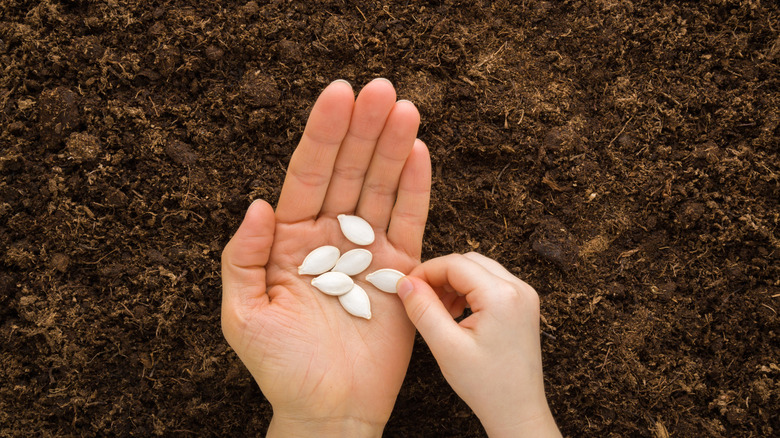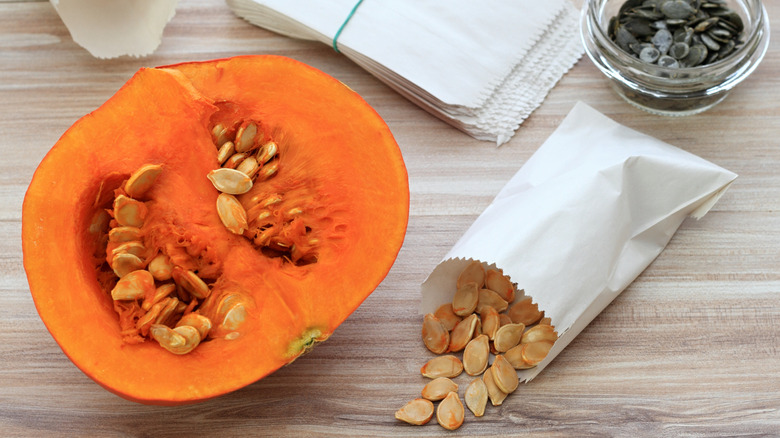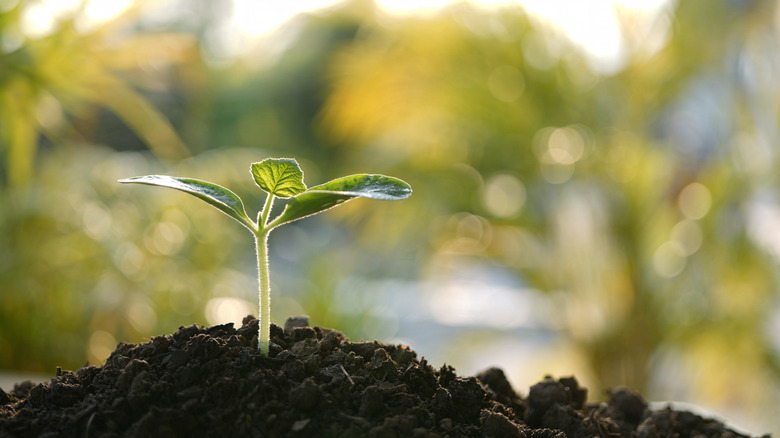How To Successfully Grow Pumpkins From Harvested Seeds
We all know the struggle of finding the perfect seeds to grow new plants. And once those tiny seeds spring to life, the reward is pure joy. There are plenty of fruits and vegetables you can grow from seed in your own backyard, and pumpkins are one of the easiest and most satisfying. If you want to make the experience of growing pumpkins even more rewarding, try growing them from your own harvested seeds. But can you use just any harvested seeds to grow pumpkins successfully? Well, no!
You don't want to harvest seeds from a hybrid pumpkin. Seeds saved from hybrid plants rarely live up to their parents. They produce plants that are less vigorous and have lower yields. Secondly, you'll need to harvest the seeds the right way, and after the harvest, store them the right way. Then, wait for the right time. This is usually in May or early June. From there it's just a matter of care and patience. Give your pumpkins the right conditions, tend to them well, and wait for the harvest.
Harvesting pumpkin seeds and storing them right
To start, choose a healthy, fully mature pumpkin from which to harvest your seeds. Make sure that it was grown in isolation and labeled as an open-pollinated or heirloom variety pumpkin. Isolation is important because pumpkins cross-pollinate with other pumpkins and squash. So, if there were other varieties of pumpkins growing nearby or any of their close relatives, the saved seed could produce unpredictable shapes, colors, or sizes.
Next, to save pumpkin seeds, start by cutting the fully mature pumpkin open. Scoop out the seeds and rinse them well to remove any pulp. Only keep the plump seeds ones, tossing out the damaged ones. Next, lay the seeds in a single layer on paper towels or a mesh screen, and let them air-dry for about two to three weeks in a cool, dry, and well-ventilated spot.
Once dry, store the seeds. There are many clever ways to store the seeds, but it's best to put them in a breathable container. Keep them in a cool, dark environment with low-humidity. Properly dried and stored, pumpkin seeds can last several years, though it is best to plant them in the first year or two.
Successfully growing pumpkins from the harvested seeds
The best time to plant pumpkin seeds is typically from the end of May to the beginning of June. But just to be extra careful, make sure that the soil temperature in your area is about 65 degrees Fahrenheit before putting the seed in the ground. As for the soil, pumpkins thrive in fertile, well-drained soils with a pH of about 6.0 to 6.8. You also need to know how to correctly map out and space your garden veggie plants, giving each plant in the area enough room to thrive and grow.
This is important as pumpkin vines need lots of space to spread out, and it's often best to use the hill method of planting wherein you place seeds in small mounds of soil with sufficient space. The ideal space for pumpkins is typically 50 to 100 square feet per hill. Plant four or five seeds per hill, with 5 to 6 feet between each hill, and rows set 10 to 15 feet apart. Water often enough to keep the soil moist but not soaking wet.
As the plants mature, switch to deep, occasional watering. All pumpkins rely heavily on insects for pollination. So, skip the insecticides once they start to bloom. Or do it when the bees are not visiting. Get the pollination right, and soon you will see pumpkins popping up in your garden.


